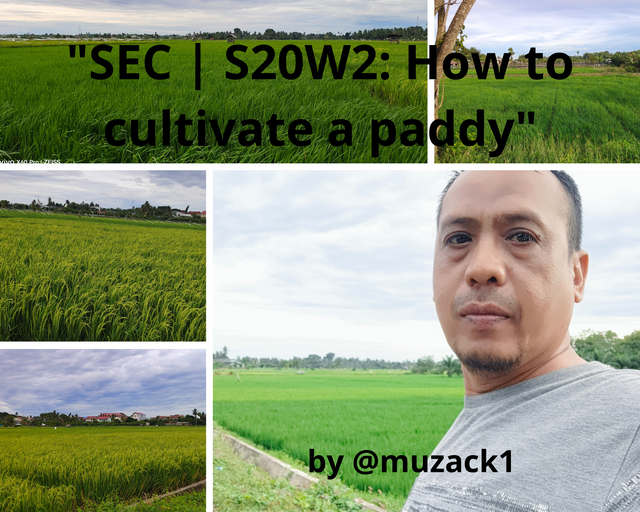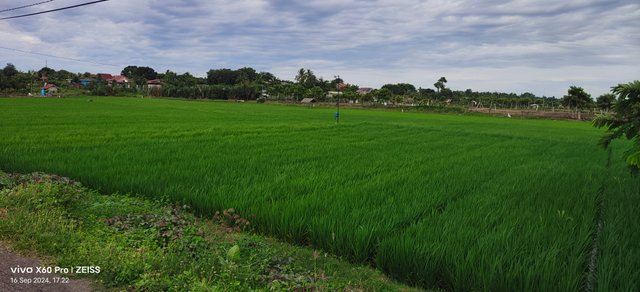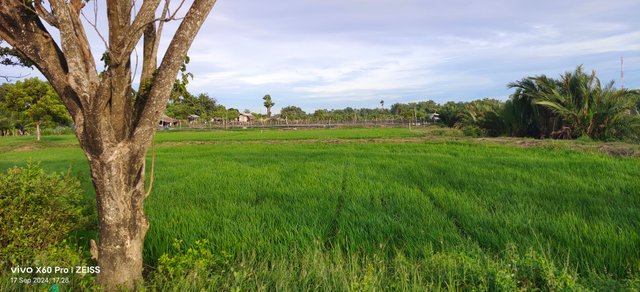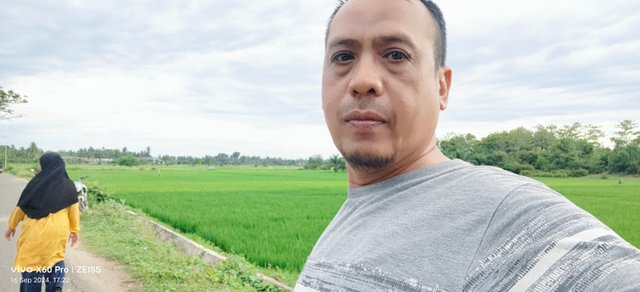"SEC | S20W2: How to cultivate a paddy"
All steemit friends, best wishes to all of you wherever you are....
Edit by Canva
There is something very interesting about being able to take part in the challenge "SEC | S20W2: How to cultivate a paddy", and before going any further I want to invite steemit friends @walictd, @ninapanda and @neukyan to participate in the challenge.
Before talking further about rice plants, I want to say that I am not currently a farmer. However, I have worked as a farmer, even when I served in rural areas as a teacher. Because farming is a job that is very close to my life.
Before starting to plant rice, of course there is a process called land preparation as a place for sowing rice seeds. There are also those without a seeding site, but planted directly.
In this stage, the nursery land is prepared by cultivating the land that has been plowed first. The soil is left for about two weeks at the same time as soaking the rice seeds that have sprouted. Then take it to the nursery and at this stage the soil moisture must still be maintained. And of course the process of waiting until it is approximately three weeks old. And then the rice plants are removed from the nursery to be planted in land that has been prepared in advance.
Planting rice requires paying attention to seasonal conditions. Because without paying attention to seasonal conditions, it will result in crop failure. The rainy season and dry season can result in failed harvests. This is something that farmers often experience. Very high rainfall will affect rice plants, as will a prolonged dry season. The point is that farmers must pay attention to the appropriate planting season so that the results they obtain are in line with the farmers' expectations.
After sowing, of course there is a very important process that farmers must pay attention to. Fertilization is the main factor that must be considered as well as irrigation. The fertilizer commonly used is urea. Irrigation in the nursery is only needed to keep the soil moist, if there is excess water it will cause the rice seedlings to die. This stage is very important for farmers to pay attention to.
Pests that attack rice plants usually attack the roots and this is done by spraying to eradicate these pests and even plants have to be replaced. If it is at a very serious stage. Of course, this can be anticipated before the rice plants are planted by spraying a special liquid and sometimes even spreading a special powder to avoid attacks by this type of pest.
Planthoppers are another pest that attacks rice plants. This can be anticipated by spraying environmentally friendly insecticides, so that the community on the land is maintained. Sometimes this is rarely noticed by farmers, who carelessly use insecticides.
Rats are a serious threat to rice plants, this is caused by excessive waterlogging in rice fields. To prevent this, farmers carry out traditional hunting or drain rice fields.
Birds are a threat that often occurs when rice starts to bear fruit. Even at harvest time, birds are farmers' main enemies. To prevent it from being used as a puppet, the rope was even guarded by farmers.
In essence, farmers make efforts so that their rice plants continue to grow well and are ready to be harvested.
At the harvest stage, of course, farmers do several things so that the rice that has been harvested can last or last until the next harvest season. For example, rice is cleaned and dried in the sun before being stored, although there are also farmers who immediately store freshly cut rice grains using simple tools and air them first. Currently, the harvested rice is immediately put into sacks after drying it first.
This is done so that the stored rice is dry and does not contain much water. This will make the rice last longer.
Thank you to all steemit friends who have stopped by my post. Greetings @muzack1





Upvoted. Thank You for sending some of your rewards to @null. It will make Steem stronger.
Hi @muzack1! 😊 It’s great to see you participating in the "SEC | S20W2: How to cultivate a paddy" challenge! I love your insights about rice farming. 🌾 Your explanation of seedbed preparation and the importance of timing for planting is really helpful. It's true that understanding seasonal changes is key to a good harvest! 🌧️☀️
I also appreciate your tips on irrigation and pest control. Managing these factors is so important for healthy rice plants. 🐜🚫 Plus, your advice on how to preserve rice after harvesting is super useful! Keeping it dry is definitely a smart move. Thanks for sharing all this valuable info! Looking forward to seeing more from you and the invited friends! 👍✨
Sometimes we have to pay close attention to planting patterns, managing yields is very important. So we have to pay attention to what we do with agricultural products, especially rice. Thanks you for support my post
Yes totally agree.My pleasure
Welcome to the agro-learning challenge season 20.
Observations and suggestions:
. I expected a detailed explanation for seedbed and soil preparations, but your explanation fell short. Brief details from landing preparation, ploughing, levelling...to narrowing and smoothing should be well captured. Soil testing, fertilizer application, pests and diseases management,...to seed selection and sowing.
. Nice views on the importance of planting at the right but still not detailed. Aside from considerations given to weather variations, we should also look at the need to combat pests and diseases, effective water management, reduction in crop failures, and quality and and quantity yields as some of the importance of planting at the right time.
. I do hope you come out with more details in your next publication.
. Generally, you have a good post-presentation.
Thank you for your participation.
We hope to see you in week 3.